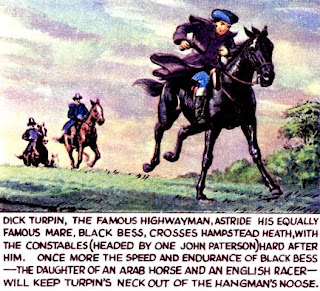
Robert Norton Ayton (1915-1985) was born in Bowes Park, in the London borough of Wood Green. He was the second of four brothers. In 1919 the Aytons moved to Wembley, where Robert attended Park Lane Primary School. As a boy, as well as showing an early interest and capability in art, he loved speed and designed and built model aeroplanes. His nephew Rupert (son of Robert’s younger brother William) later cherished a 12" example of one of Robert’s hand-carved propellers.
In 1928, following the sudden death of his father, the almost 13-year-old Robert was offered an apprenticeship with Adkin and Sons, a branch of the Imperial Tobacco Company. Robert's father and grandfather had both been loyal and successful servants to Adkin. Robert however declined the invitation, and from about 1930 he attended the Harrow School of Art. He may have taken additional courses with the Central School of Art and Design and/or Hammersmith School of Art.
After his formal art training, Robert worked for several advertising agencies, including (possibly) Dorland's, before becoming a freelance artist. In the late 1930s he had an account with Castrol and around this time also undertook substantial commissions from Rolls Royce. His various commissions included aeroplanes and fast cars, including Malcolm (later Sir Malcolm) Campbell’s Bluebird.
In 1939 Robert met Joan Elmes, who would later become his wife. They saw little of each other during the next few years because Robert was called to Army service in the Second World War, but they were married during leave, in 1942.
After the war, in 1945 Robert picked up his freelance artist’s career. He became friends with Norman Williams who, from 1950, would illustrate many of Eagle’s true life adventures. Through Norman Williams, in 1955 Robert was recruited by Marcus Morris to illustrate a new adventure strip set in the times of the Napoleonic Wars. The strip, written by George Beardmore was ‘Jack o’Lantern’. It quickly became one of the most popular strip stories in Eagle, as recorded by the Hulton readers poll at the time.
Soon after starting on ‘Jack o’Lantern’, Robert and Joan moved to Yeovil, Somerset, and over the next five years Robert would draw nearly 250 weekly full-colour episodes. His strips had an air of authenticity aided by painstaking research of his subject matter from uniforms and fashion to the settings for the stories. Joan recalled, when interviewed in 1997, that she and Robert tramped around the village of Bosham taking photographs when Robert was researching the location for the ‘Jack o’Lantern’ story ‘The Moonshiners’.
In 1957, when his friend Norman Williams died, Robert took the news hard but, called on the draw the final episode of ‘The Great Sailor’ (the story of Nelson), he did so, although his artwork was not credited. After he left in 1959 to take a break from weekly deadlines, ‘Jack o’Lantern’ continued, drawn by another artist (C. L. Doughty), but only for another 36 episodes.
After what was to be a two year break from comic strip work, he took on drawing half page illustrations for Girl, and other art work. Then Robert returned to Eagle in 1961 to draw ‘The Golden Man’, the story of Sir Walter Raleigh, in a strip scripted by Guy Daniel and Marcus Morris. It was his final work for Eagle.
Like quite a few former
Eagle artists (including Frank Hampson, Frank Humphris and Martin Aitchison) Robert later worked for Ladybird Books, illustrating for them around 50 books on a variety of subjects, from fairy tales to technology. Often he would put himself into his drawings - for example as the Slave of the Lamp in ‘Aladdin’. He taught illustration part-time at the West of England College of Art. He also illustrated for Oxford University Press, drew television background illustrations for BBC Bristol, and from 1980 was a member of the artistic group known as the
Bristol Savages. At that time he lived in a large farmhouse outside Backwell, Bristol.
In 1983 Robert and Joan moved to a smaller home, a glass-workers row house, at nearby Nailsea. It was there, two years later and aged 70, that Robert died in Joan's arms after suffering a massive heart attack. He and Joan never had children. As Joan put it, when interviewed for Eagle Times: “There are enough delinquents in the world without bringing more into it.”
Eagle Strips:
- Jack o’Lantern (Vol 6 No 4 - Vol 10 No 40)
- The Great Sailor - final episode, uncredited (Vol 8 No 11)
- The Golden Man (Vol 12 Nos 15 - 37)
Eagle Annual Strips:
- Jack o’Lantern Eagle Annual No 6 - No 11 [1962]
Links:
ET Refs:
- Howard Corn. Robert Ayton. Eagle Times Vol 10 No 3 pp 2 - 6 *
* Thanks to Rupert Ayton for corrections and additional information about his uncle Robert
Update (1 Apr 2014) - Thanks to Andoni for correcting info re Jack o'Lantern (which previously stated Robert Ayton's run on the strip ended with issue Vol 10 No 45). As Andoni has pointed out, C.L. Doughty took over from issue Vol 10 No 41. C.L. Doughty therefore drew 36, rather than the previously stated 31 episodes, and I've amended that info also.

















